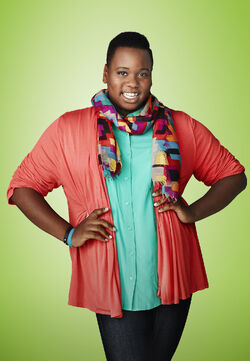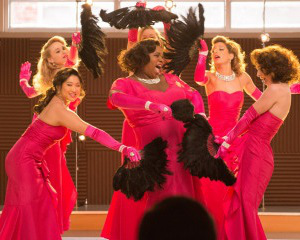Race and Ethnicity

Glee- Unique Adams/ Wade Adams
This is a positive representation of race as they don't draw attention to it and make a big deal of it, instead of questioning her background they except her for her. Other issues are portrayed through her, as she is the first transgender on the show. Unique was born male and named Wade, but since growing in confidence she now prefers to be referred to as a 'she' and she identifies herself as Unique. She is an American and the colour of her skin is black, which is such a positivity in the media as discrimination was a massive problem especially in the U.S.A. Unique is portrayed as a stereotypical black woman in certain aspects because she is confident and has a very powerful and soulful voice. She is also a larger lady and loves her body which is typical of a black woman but also positive because it is emphasising that we should love our bodies; especially as she is a role woman for millions of teenagers. Unique is a fairly humorous character on the show, however she is also pitied at the beginning when she comes into the show as an unconfident and insecure male who feels trapped in their own body.

This image shows unique in her element, she is performing with her friends and it is here that she feels most confident and accepted. She is sexualised here as she is in a figure hugging, hot pink dress with feathers, which have connotations of jazz dancing.
In this scene she is super confident and happy, adding to the positive portrayal.
12 Years A Slave-
In this film the White Americans are portrayed as the nasty villains, opposed to the Black Americans who are usually portrayed negatively. The owners of the slaves are white and they are the ones who are psychically abusing the Black American Slaves. In one particular scene, despite the slave trying to stand up to the White American slave owner, he goes ahead and rapes on of the pitied female Black Slaves. This is a negative portrayal of White Americans for they are being illustrated as dangerous and villainous, compared to the Black Americans who are pitied.
The black women are presented as strong for carrying on in those conditions, where as the White American women are conveyed as weak for just following the orders and not questioning the thoughts.
No comments:
Post a Comment